Week beginning November 5th – Year 3 to 6
Buying a Balloon
There is a clock-face where the numbers have become all mixed up. Can you find out where all the numbers have got to from the ten statements below?

Here is a clock-face with letters to mark the position of the numbers so that the statements are easier to read and to follow.
- No even number is between two odd numbers.
- No consecutive numbers are next to each other.
- The numbers on the vertical axis (a) and (g) add to 13.
- The numbers on the horizontal axis (d) and (j) also add to 13.
- The first set of 6 numbers [(a) – (f)] add to the same total as the second set of 6 numbers [(g) – (l)] .
- The number at position (f) is in the correct position on the clock-face.
- The number at position (d) is double the number at position (h).
- There is a difference of 6 between the number at position (g) and the number preceding it (f).
- The number at position (l) is twice the top number (a), one third of the number at position (d) and half of the number at position (e).
- The number at position (d) is 4 times one of the numbers adjacent (next) to it.
The first step of this problem is to find any definite numbers, which I found on clue 6. (Number position F is in the correct position on the clock face.) So now we know that F is 5. Next we drew a diagram to remember what we did, we recorded our information on it.
From clue 2 (No consecutive numbers are next to each other) I know that 1-12 a-b are not in order.
From clue number 1, it gives us a good clue (No even number is between two odd number) so I know that E or G are even numbers or odd numbers. One must be even and one must be odd.
I know that G would be number 11. This is because on clue 8, (There is a difference of 6 between the number at position G and the number preceding it (F)) G must be 11 because if 5 minuses 6, it would be negative, there is no negative number on the clock. Also, 5 plus 6 equals 11. You can figure out A because you know G. On number 3 it says the numbers on the vertical axis A and G add up to thirteen. So if G is 11, all you have to do is minus 11 from 13, which is 2.
Question 9 is a good clue to do because you can find three numbers. (The number at position L is twice the top number A, one third of the number at position D and half of the number at position E.) First, you know what number A is so you can find L which can bring you to the letters D and E. Since A is 2, twice A is 4 which means L is 4.
To figure out D, it says that L is one third of D so you have to times L(4) by 3 which equals 12. To get E, it says that L is half of D so you have to let L(4) times 2 which equals to 8. Now you have the numbers of the letters L, D and E.
Numbers H and I are definitely even numbers because so far, the pattern is even even odd odd and because on clue 1, it says No even number is between two odd numbers. To get the number for letter H, you need clue number 7. (The number at position D is double the number at position H.) Which also means D is half of H. If D is 12, then half of twelve is 6, which means that H is 6.
Number 4 helps us to get the number of the letter J. On clue 4, it says (The numbers on the horizontal axis D and J add up to 13.) If D is 12, 13 minus 12 equals 1 which means that J is 1.
On clue 10, It tells us that the number position D is 4 times one of the numbers adjacent (next) to it. C and E are next to D. Since we already have E, then we need C. If D is 12, then 12 divided by 4 equals to 3. C is 3.
There is only K, B and I left. We know that I is definitely an even number because the order is even even odd odd, this is because clue one says that no even number is between 2 odd numbers. The only numbers left are 7, 9 and 10. There is only one even number so I must be 10.
Lastly, clue 5 helps you with the total answer. Clue 5 tells us that the first set of 6 numbers A-F add to the same total as the second set of 6 numbers G-L. We don’t have all the numbers yet but you can still add them together to get the other numbers. A-F missing 1 number, (the number we have) 2, 3, 12, 8, 5. If you add them together, it equals to 30. G-L is missing 1 number,(the numbers we have) 4, 1, 10, 6. If you add them together, it equals 32. We need the numbers 7 and 9. 7 and 9 have the difference of 2. 32 and 30 also have the difference of 2. If A-F only has 30 and G-L has 32, then the greater number that is left(9) goes to B. The smaller number goes to G-L because without the number for letter K, G-L had a greater number after added up.

